DeFi TVL Calculator
Calculated TVL:
$0.00
When you browse a DeFi dashboard and see a big number next to a protocol, that’s usually the Total Value Locked - a snapshot of how much capital is actually working inside the system. Understanding TVL helps you gauge a platform’s popularity, liquidity, and overall health, but the metric can feel a bit fuzzy if you’ve never broken it down.
Key Takeaways
- TVL measures the dollar value of all assets locked in a DeFi smart contract.
- It’s calculated by multiplying the quantity of each token by its current market price and summing the results.
- Higher TVL usually signals stronger user confidence, deeper liquidity, and wider adoption.
- Major trackers like DefiLlama a real‑time analytics platform that aggregates TVL data across dozens of blockchains and CoinGecko a crypto market data provider that also supplies TVL figures for major protocols make the number easy to follow.
- TVL can swing due to price changes, deposits/withdrawals, or altered incentive programs, so it’s a dynamic-not static-metric.
Defining Total Value Locked
At its core, TVL the aggregate dollar value of all assets locked in a DeFi protocol’s smart contracts sums up everything users have deposited to earn yield, provide liquidity, or secure a network. The assets include native tokens like Ethereum (ETH) the primary cryptocurrency of the Ethereum blockchain, Bitcoin (BTC) the original cryptocurrency, now often wrapped for DeFi use, stablecoins such as USDC a USD‑pegged stablecoin widely used in lending platforms, and liquidity pool tokens that represent a share of a paired asset pool.
How TVL Is Calculated - Step by Step
- Identify every token that a protocol holds in its smart contracts. This includes native, wrapped, and synthetic assets.
- Pull the exact quantity of each token from the blockchain ledger.
- Obtain the current market price for each token from a reliable oracle or price feed.
- Multiply the token amount by its price to get the individual dollar value.
- Sum all individual values. The result is the protocol’s TVL.
Formula:
TVL = Σ (TokenAmount × CurrentPrice)
For example, a lending platform holding 10,000ETH priced at $2,000 each and 5million USDC at $1 each would report a TVL of $25million (10,000×$2,000 = $20M + 5M×$1 = $5M).
Why TVL Matters - The Four Pillars
Investors and developers pay close attention to TVL for four main reasons:
- User Confidence: When users lock large sums, they’re implicitly trusting the protocol’s security and code quality.
- Liquidity Depth: Higher TVL means bigger pools, which reduces slippage for traders and lowers borrowing costs for lenders.
- Adoption Signal: A rising TVL curve often mirrors a growing user base and expanding ecosystem integrations.
- Competitive Benchmark: Comparing TVL across chains or categories (e.g., lending vs. DEX) highlights market leaders and potential opportunities.
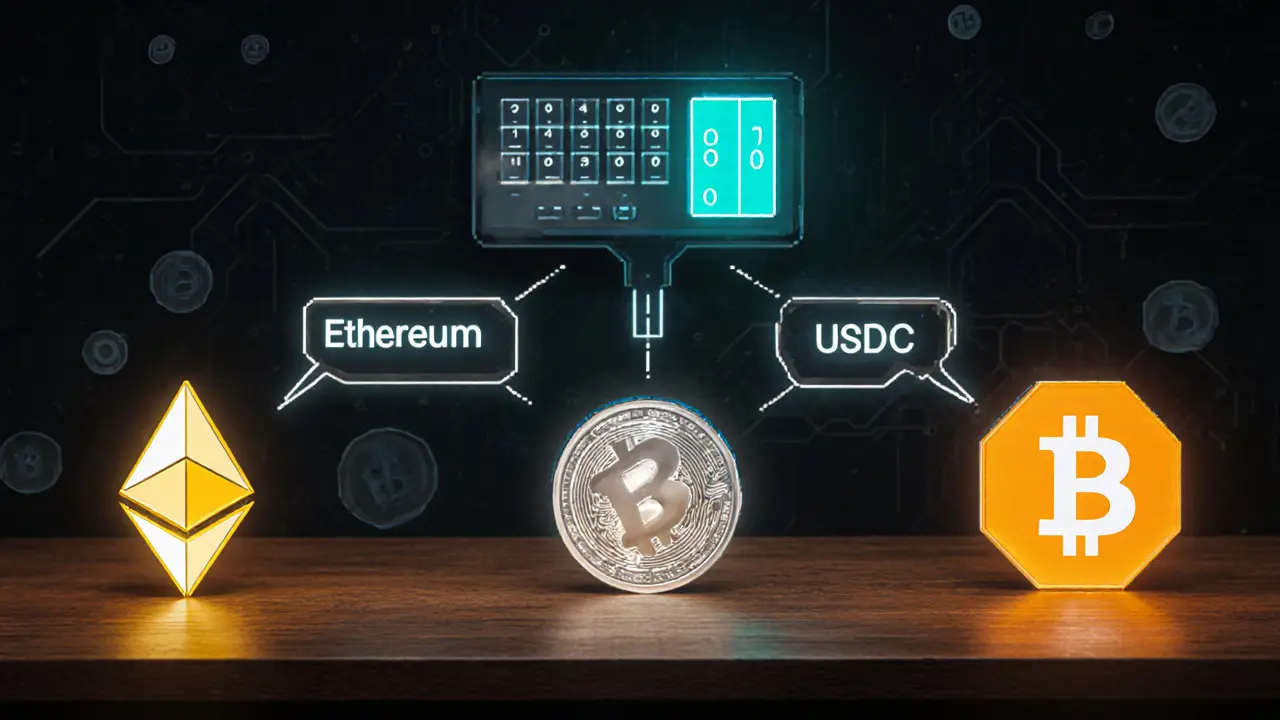
Real‑World TVL Numbers in Mid‑2025
According to data from DefiLlama, the global DeFi TVL sits around $127billion. Here’s a quick snapshot of the top three ecosystems:
| Blockchain | TVL (USD) | Key Protocols |
|---|---|---|
| Ethereum | $78B | Uniswap, Aave, MakerDAO |
| Binance Smart Chain | $18B | PancakeSwap, Venus |
| Solana | $12B | Serum, Marinade |
Ethereum still dominates, but the growth rates on BSC and Solana are faster, indicating users are chasing lower fees and faster finality.
Tools to Track TVL in Real Time
Manually pulling on‑chain balances and price feeds is a nightmare. Fortunately, three platforms have become de‑facto standards:
- DefiLlama: Pulls data from over 100 blockchains, offers cross‑chain aggregation, and shows historical TVL charts.
- CoinGecko: Provides TVL alongside market cap, volume, and token‑specific data, making it handy for quick comparisons.
- L2BEAT: Focuses on layer‑2 solutions, giving a clear picture of how scaling solutions affect overall TVL.
All three platforms source token prices from trusted oracles and update their dashboards every few minutes, so you’re always looking at near‑real‑time numbers.
Interpreting TVL Fluctuations
TVL isn’t a static figure; three forces push it up or down:
- Deposits & Withdrawals: New capital inflows raise TVL directly; large withdrawals do the opposite.
- Price Movements: If locked ETH spikes from $1,800 to $2,200, TVL jumps even without any new ETH entering the contract.
- Incentive Changes: Yield farms that raise reward rates often attract more deposits, bumping TVL temporarily.
Because price volatility can inflate TVL, savvy analysts sometimes look at “risk‑adjusted TVL,” which weights assets by their historical volatility.
Limitations & Risks of Relying Solely on TVL
While TVL is a powerful health check, it’s not the whole story:
- Price Sensitivity: A protocol holding mainly stablecoins will show a steadier TVL than one loaded with high‑beta tokens, even if the latter has more active users.
- Double Counting: When assets move between protocols (e.g., from a DEX to a lending platform), TVL can be counted twice across the ecosystem.
- Smart‑Contract Risk: High TVL doesn’t guarantee safety; a single exploit can wipe out billions, as seen in past hacks.
- Cross‑Chain Complexity: Bridged assets may be over‑represented if the bridge’s backing isn’t transparent.
Combine TVL with other metrics-like total fees, active addresses, and audit reports-to get a balanced view.
Quick Reference: TVL Cheat Sheet
| Term | What It Means |
|---|---|
| TVL | Sum of all assets locked in a protocol, expressed in USD. |
| Liquidity | Depth of funding available for trades or loans; closely linked to TVL. |
| Risk‑Adjusted TVL | TVL weighted by asset volatility and smart‑contract risk scores. |
| Cross‑Chain TVL | Total TVL across multiple blockchains, often aggregated by DefiLlama. |
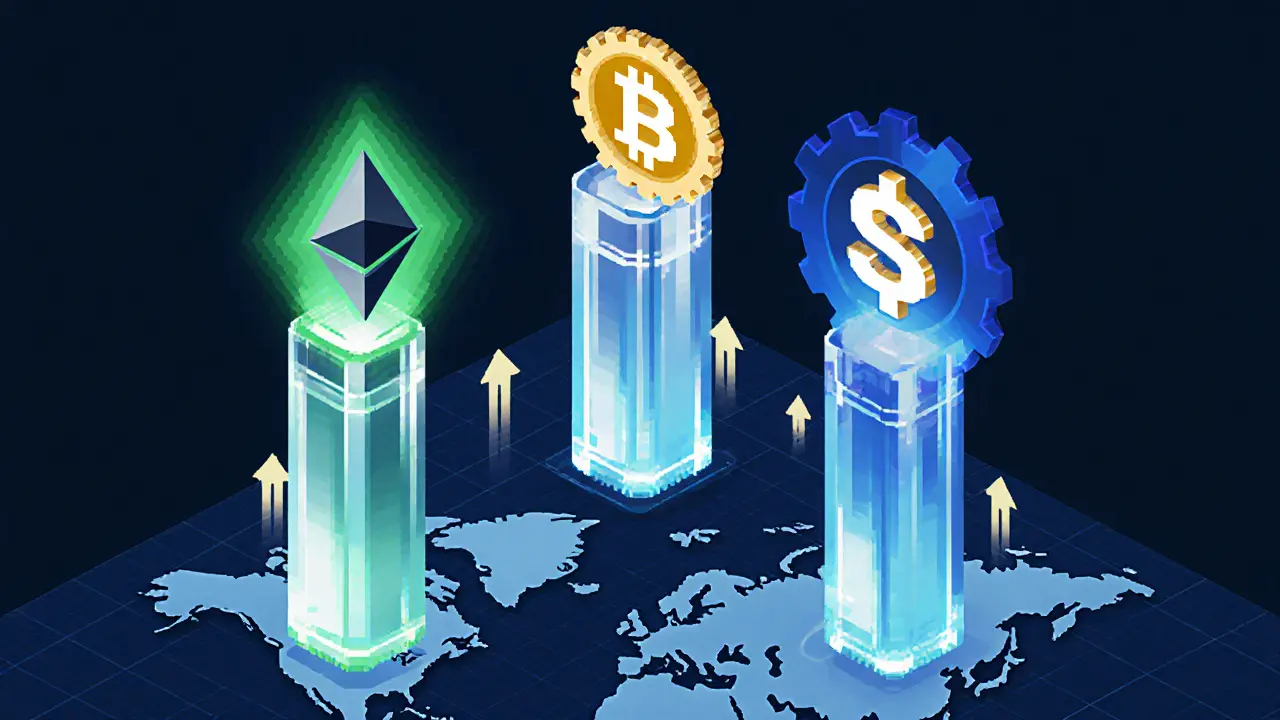
Frequently Asked Questions
What exactly does TVL measure?
TVL captures the current dollar value of every token that a DeFi protocol has locked in its smart contracts. It reflects both the amount of capital supplied by users and the market price of those assets.
How often is TVL updated?
Leading trackers refresh TVL every 1-5 minutes, pulling the latest on‑chain balances and price feeds. However, extreme market swings can make the number look volatile within seconds.
Can I compare TVL across different blockchains?
Yes. Platforms like DefiLlama aggregate TVL from Ethereum, BSC, Solana, Avalanche, and dozens of others, letting you see which ecosystem holds the most capital.
Why does TVL sometimes drop even when no one withdraws?
Because TVL is priced in USD, a decline in the market price of the locked assets (e.g., ETH falling 20%) reduces the dollar value, even if the token quantity stays the same.
Is a higher TVL always better?
Higher TVL often indicates trust and liquidity, but it can also mask concentration risk (few whales controlling most of the capital) or exposure to volatile assets. Always pair TVL with other health checks.
How do stablecoins affect TVL readings?
Stablecoins like USDC and USDT are pegged to the dollar, so they provide a steadier TVL base. Protocols heavy on stablecoins tend to show less dramatic swings.
What’s the difference between TVL and market cap?
Market cap values the total supply of a token at current prices, regardless of where those tokens sit. TVL only counts tokens actively locked in a protocol, showing real‑world usage rather than mere tokenomics.
Will TVL keep growing as DeFi matures?
Trends suggest a gradual rise, especially as institutional capital enters DeFi and cross‑chain bridges improve. However, macro‑economic cycles and regulatory shifts can cause temporary pull‑backs.
In short, TVL is the go‑to metric for measuring how much money is actually flowing through a DeFi protocol. By learning how it’s calculated, what drives its movements, and where its limits lie, you can read the number like a seasoned analyst-and avoid getting fooled by hype alone.

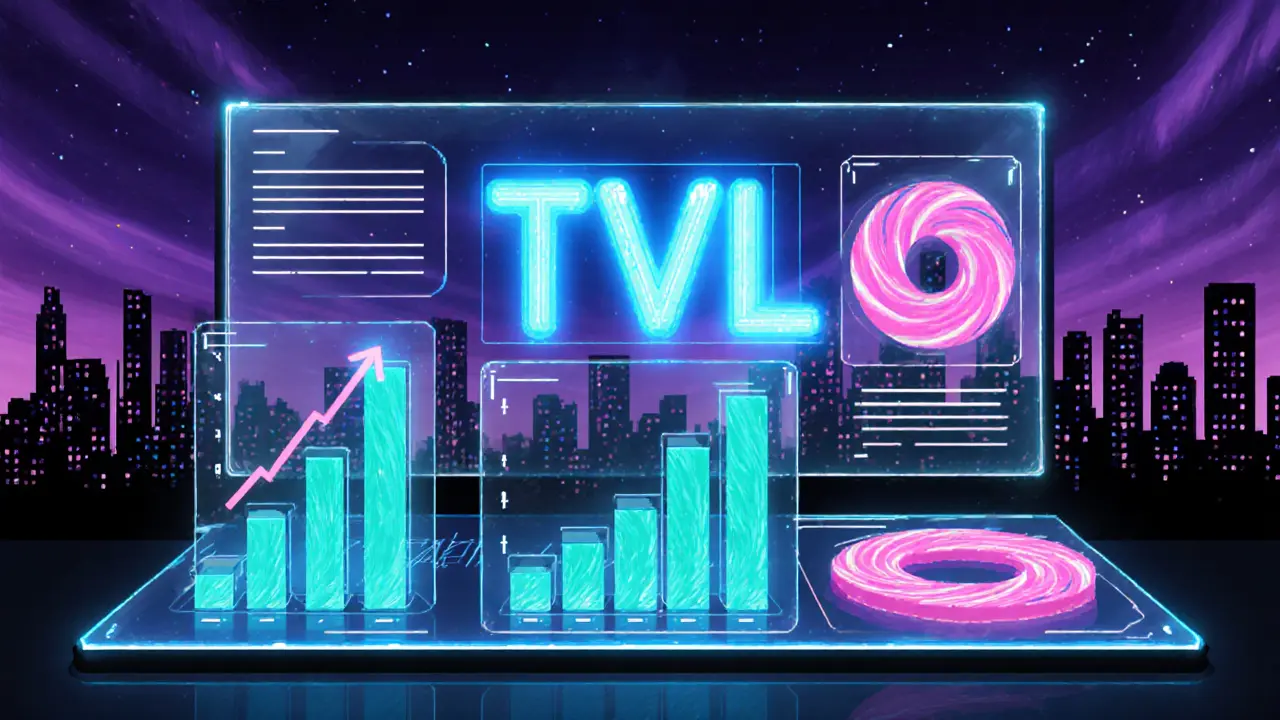

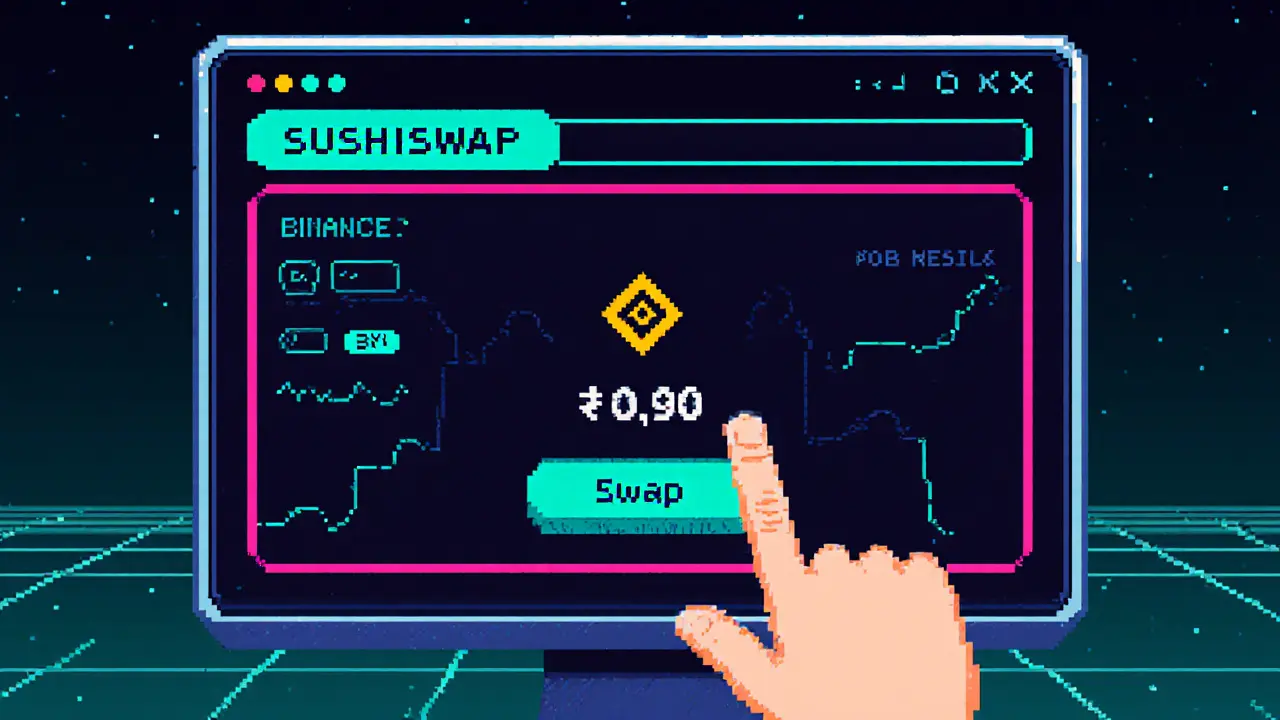
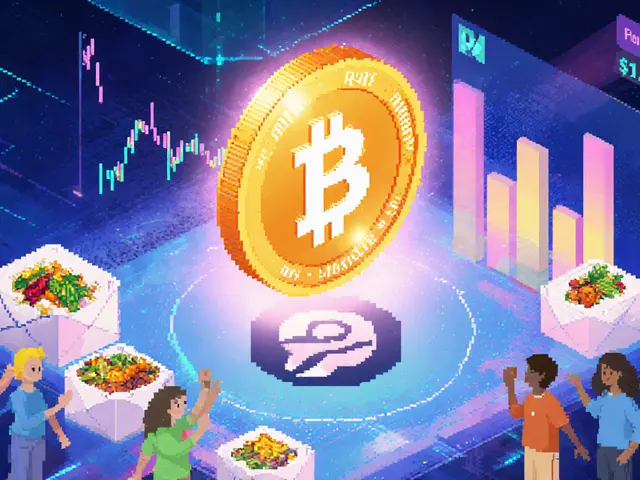




MD Razu
November 23, 2024 AT 06:55The concept of Total Value Locked is more than a mere accounting trick; it is a reflection of collective faith in code. When capital chooses to sit idle inside a smart contract, it whispers a promise of future yield and security. That promise, however, is wedded to the volatile dance of market prices, making TVL a living, breathing metric. In the grand theater of decentralized finance, TVL takes center stage, inviting investors to watch the choreography of deposits and withdrawals. Each token locked is a footnote in the saga of trust, each price swing a plot twist that reshapes the narrative. The metric therefore serves as a barometer of both liquidity depth and community confidence. Yet the numbers alone cannot capture the hidden risks lurking beneath the surface. Smart‑contract bugs, governance failures, and regulatory storms can all erode that locked value overnight. Historically, we have seen TVL surge during hype cycles only to collapse when the excitement fades, reminding us that the metric is not a crystal ball. Analysts often pair TVL with active address counts and fee revenue to triangulate a protocol’s health. Moreover, the rise of cross‑chain bridges adds layers of complexity, sometimes inflating TVL through double counting. A prudent investor peels back these layers, asking where the capital truly resides. The distinction between native and wrapped assets becomes crucial in that assessment. Ultimately, TVL is a useful compass, but it must be navigated with a map of complementary data. Only then can the journey through DeFi’s ever‑shifting landscape be undertaken with confidence.
Charles Banks Jr.
November 29, 2024 AT 03:38Oh great, another metric to freak out the newbies. TVL is basically the “size of the pie” you’re being invited to eat, if you trust the baker. Just don’t forget the oven might be on fire.
Ben Dwyer
December 5, 2024 AT 00:22If you’re just starting with DeFi, think of TVL as a simple gauge of how much money people have confidence to lock up. It’s a good way to spot which protocols have community backing. Remember, higher TVL generally means deeper liquidity, which can lower slippage for traders. Don’t let short‑term price swings scare you; focus on the overall trend. Keep experimenting with small amounts until you feel comfortable.
Lindsay Miller
December 10, 2024 AT 21:05I get why TVL can seem confusing at first. It’s basically the dollar value of everything sitting in a protocol’s contracts. Think of it like a savings account that people can earn interest from. When the number goes up, it usually means more folks trust the platform.
Katrinka Scribner
December 16, 2024 AT 17:49TVL numbers are just numbers, lol 😂🚀
Nathan Blades
December 22, 2024 AT 14:33Picture this: a massive vault of assets humming with activity, each token a heartbeat that powers the DeFi machine. That’s TVL in action – a living, throbbing pulse of capital. When the TVL spikes, the market feels the surge like a wave crashing onto a shore. It’s not just static data; it’s the collective ambition of thousands of users seeking yield. Yet, with great power comes great responsibility – the larger the vault, the bigger the target for hackers. So while you admire the soaring numbers, keep a keen eye on security audits and insurance funds. In the end, TVL is both a trophy and a cautionary tale.
Somesh Nikam
December 28, 2024 AT 11:16The beauty of TVL is that it gives you a snapshot of real‑world capital flowing into DeFi protocols. By tracking it, you can see which projects are gaining traction and which are losing steam. This helps you allocate your resources more wisely and reduces the guesswork. Keep an eye on the trends, and don’t be afraid to diversify early. 😊
Jan B.
January 3, 2025 AT 08:00TVL shows locked assets in dollars. It reflects user trust. Simple metric for liquidity. Use it alongside fees and active users.
MARLIN RIVERA
January 9, 2025 AT 04:44TVL is often glorified as the holy grail of DeFi health, but it’s a shallow veneer that masks underlying fragility. A high TVL can simply be a hoard of over‑leveraged assets ready to implode. Numbers can be inflated by wrapped tokens that double‑count across chains. Relying on TVL alone is a rookie mistake that invites disaster. Challenge the metric, dig deeper, and demand transparency. Otherwise you’re just following the herd into a potential abyss.
Debby Haime
January 15, 2025 AT 01:27When you look at TVL, think of it as a temperature reading for the ecosystem – it tells you whether things are heating up or cooling down. A rising TVL usually signals growing confidence and liquidity, which is great for traders and lenders alike. But remember, it can also be a mirage if it’s driven by a single volatile asset. Stay curious, compare across protocols, and use multiple data points before making moves. This balanced approach will keep you from getting burned.
Jayne McCann
January 20, 2025 AT 22:11I’m not convinced that a bigger TVL always means a better project. Sometimes the hype inflates numbers without real utility.
Richard Herman
January 26, 2025 AT 18:55I see value in TVL as a quick health indicator, yet I also appreciate its limits. Combining it with on‑chain activity metrics gives a fuller picture. Different ecosystems have varying price dynamics, so cross‑chain comparisons need context. It’s also worth noting that community governance can impact long‑term stability. By keeping an open dialogue, we can better interpret what those numbers really mean for users.
Parker Dixon
February 1, 2025 AT 15:38TVL can be a useful entry point for newcomers, but I always suggest pairing it with fee‑generation data to gauge actual usage. 📊 For example, a protocol with high TVL but low fees might indicate dormant capital. Also, look at the number of unique active addresses to see if many users are interacting. 📈 This multi‑metric approach reduces reliance on a single figure and helps you make informed decisions. Keep asking questions and share what you learn with the community.
Stefano Benny
February 7, 2025 AT 12:22While TVL is touted as the quintessential KPI, it often suffers from composability leakage and synthetic asset double‑counting. 🚀 In a multi‑chain paradigm, cross‑rollup aggregation can artificially inflate the numerator, skewing the perceived market depth. Hence, a calibrated risk‑adjusted TVL, factoring volatility‑weighted exposure, is indispensable for granular risk assessment. 🛡️
Bobby Ferew
February 13, 2025 AT 09:05I love how TVL can be a shiny metric, but sometimes it feels like we’re just chasing vanity numbers. Still, it does provide a baseline for ecosystem liquidity.
celester Johnson
February 19, 2025 AT 05:49TVL is the yardstick of collective faith, yet many forget it’s just a snapshot of dollars, not a guarantee of safety. Assess the code audits and governance alongside this figure, otherwise you’re worshipping a false idol.
Prince Chaudhary
February 25, 2025 AT 02:33Remember that TVL reflects the amount of capital users have chosen to lock, which can be a sign of confidence. However, always verify the underlying smart contract security before committing substantial funds.
John Kinh
March 2, 2025 AT 23:16TVL numbers are overhyped. 🙄
Mark Camden
March 8, 2025 AT 20:00It is imperative to understand that TVL, while informative, should never be the sole determinant of a protocol’s merit. A rigorous analysis must include audit reports, governance models, and tokenomics. Ignoring these facets in favor of a single metric demonstrates intellectual laziness. Moreover, conflating high TVL with inherent security is a logical fallacy that many novices perpetuate. As responsible participants, we owe it to the community to demand comprehensive due diligence. Only through such disciplined scrutiny can we safeguard the integrity of the DeFi ecosystem.
Evie View
March 14, 2025 AT 16:44Stop treating TVL like a crystal ball; it’s just a number that can be manipulated! If you can’t see the risks, you’re being reckless.
Kate Roberge
March 20, 2025 AT 13:27Sure, TVL looks impressive on a chart, but that doesn’t mean the protocol isn’t a house of cards ready to tumble.
Oreoluwa Towoju
March 26, 2025 AT 10:11TVL gives a snapshot of locked capital. Use it alongside user activity for better insight.
Jason Brittin
April 1, 2025 AT 06:54TVL is handy, but don’t let it blind you to the underlying mechanics. Look at the code, the incentives, and the real user behavior. 😏